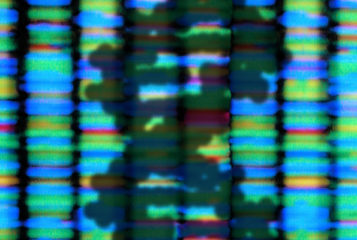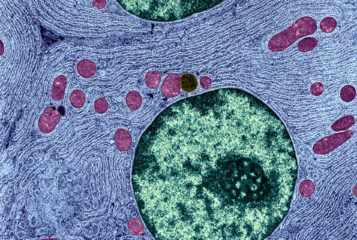Scientists in the USA have demonstrated how stem cell techniques may benefit people with incurable mitochondrial diseases. The research suggests it might one day be possible to replace diseased tissue in patients affected by the disorders.
'Today we can say that a cure is on the horizon,' said Professor Shoukhrat Mitalipov of the Oregon Health and Science University, who was lead author on the study. 'Over the past several years, we have been working to generate stem cells for use in combating disease. This critical first step toward treating these diseases using gene therapy will put us on the path to curing them.'
Mitochondria are inherited from a child's mother, but not all affected children will have symptoms of mitochondrial disease, which varies in severity between each individual. In the UK, it is thought that around one in 6,500 children develop severe mitochondrial diseases, which can lead to muscle weakness, diabetes, deafness, blindness or heart failure.
The new study, published in Nature, shows that it is possible to revert skin cells containing damaged mitochondrial DNA (mtDNA) to pluripotent stem cells containing healthy mitochondria. The cells were taken from patients with three of the most common disease-causing mtDNA mutations. For each mutation type the researchers grew ten stem cell lines, in which they measured the proportion of mutations.
In some of the stem cell lines it was found that mtDNA mutations were no longer detectable and that the mitochondria had recovered the respiratory functions that are compromised in mitochondrial disease state. The researchers suggest that these non-mutated cells could then be multiplied and transplanted into patients to repair damaged tissues.
The researchers also created embryonic stem cells with healthy mitochondria by pairing the nucleus of the skin cells from patients affected by mtDNA mutations with genetic material from a donor egg containing healthy mitochondria.
'Induced pluripotent stem cell and somatic cell nuclear transfer are two complementary cell-reprogramming strategies that hold great potential for patient-specific cell-replacement therapies,' said Dr Jun Wu at the Salk Institute for Biological Studies, who is a co-author of the study.
Earlier this year the UK became the first country in the world to legislate for mitochondrial donation (reported in BioNews 789 and 792). Mitochondrial donation requires biological material from three people — the child's parents and a female mitochondrial donor — and has sparked debate over the safety and ethical implications of the techniques. Finding cells containing healthy mitochondria in a patient's own reprogrammed cells could avoid the need to use a donor.
Genome editing is another technique that aims to prevent the inheritance of mitochondrial disease (reported in BioNews 779). This approach uses DNA-cutting enzymes to target the mutated mtDNA in egg cells to increase the proportion of healthy mitochondria in a cell, and, if developed into a treatment, would also not require DNA from three people. The new research differs in that the researchers hope that it could be used to treat existing patients with mitochondrial disease, rather than preventing its transmission.
'Regenerative technologies offer the prospect of transformative solutions to correct tissue defects in disease. Current care for mitochondrial diseases is limited to addressing patient symptoms, but falls short from providing a definitive cure,' said Dr Andre Terzic of the Center for Regenerative Medicine at the Mayo Clinic, another of the study's co-author. 'Resetting or replacing disease-corrupted mitochondria to produce healthy patient-derived stem cells paves the way towards targeting the root cause of the problem.'
Professor Darren Griffin, director of the Centre for Interdisciplinary Studies of Reproduction (CISoR) at the University of Kent, who was not involved in the study, said: 'This is clearly a very exciting study that might pave the way to possible treatment of mitochondrial disorders... It will however be some time before it can be applied clinically.'
Sources and References
-
Mitochondrial disease study raises hope of treatment
-
Three parent babies needless as 'cure' for mitochondrial disease on horizon
-
Mitochondrial Disease Research Makes Progress
-
Metabolic rescue in pluripotent cells from patients with mtDNA disease
-
OHSU scientists unlock first critical step toward gene therapy treatment for patients with mitochondrial disease







Leave a Reply
You must be logged in to post a comment.